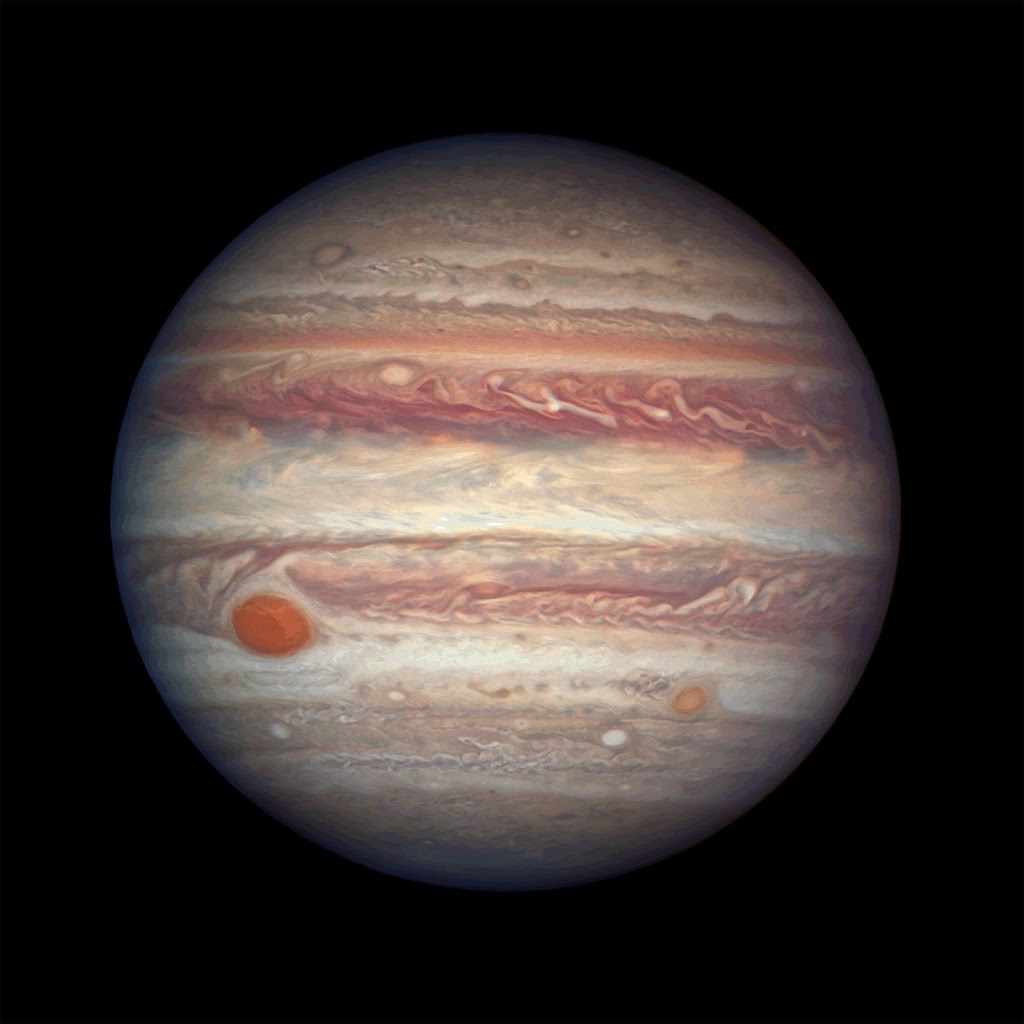The Gas giant Jupiter is the largest planet in our solar system consisting of many distinctive and interesting facts both internally and externally. Jupiter’s vibrant color create the most conspicuous feature of its visible cloud surface but what does a cosmic rose of Jupiter look like? The Great Red Spot is generally reddish in color, oval in shape and was known for its long-lived massive storm system on the Planet Jupiter. The source of the red coloration is unknown, suggestions range from compounds of sulfur and phosphorus to organic material, any of which could be produced by lightning discharges or by high-altitude photochemical reactions.
In size, Jupiter’s Great Red Spot is approximately two times larger than Earth. For reference, that’s about as wide as three planet Earths could fit side by side. It is one of many vortices on Jupiter that have been observed for centuries. Scientists aren’t exactly sure how long it has been on Jupiter, but it could be a permanent fixture for all we know! Its location on Jupiter was known long before people knew about its existence through telescopes and recordings of celestial events.
The Great Red Spot is a persistent high-pressure region in the atmosphere of Jupiter, producing an anticyclonic storm that is the largest in the Solar System. It is about twice as wide as Earth circling the planet in its southern hemisphere, approximately 16,350 km wide and large enough to engulf earth. But it has been gradually shrinking into a more circular shape overtime, and the storm is currently half the size it was at the end of the 19th century. Inside this storm, the wind can reach the speed to about 430-680 km/h which is more than twice the speed of even the strongest hurricanes on Earth that can generate wind speeds of up to 281 km/h.
Jupiter’s Great Red Spot is a persistent anticyclonic storm located near its equator. It is a relatively small storm, with its biggest feature measuring 16,300 miles across at its widest point—only about two-thirds of Earth’s diameter. However, it is extremely prominent because it has been observed for more than 300 years and astronomers have determined that it rotates counterclockwise around Jupiter.
The storm is contained by an eastward-moving atmospheric band to its north and a westward-moving band to its south. Those swirling bands are also what formed the storm in the first place and have kept the storm spinning for more than a century, Glenn Orton, a lead Juno mission team member and planetary scientist at NASA Jet Propulsion Laboratory, told Business Insider.
Like a cyclone on Earth, Jupiter’s Great Red Spot churns counterclockwise. But unlike typical storms on Earth, it never really dies down; instead, winds inside of it reach speeds of almost 400 miles per hour. Even though there are smaller storms elsewhere on Jupiter that rotate at higher speed—like those near its north and south poles—the Great Red Spot is still bigger than all of them combined. It takes about six Earth days for it to complete one rotation.
Since Jupiter have no solid surface, it may explain the impacts on the Great Red Spot longevity partially. Because if it is on earth, hurricanes will start to slow and break apart when they reach solid land. However, its longevity which is at least 150 years can also result from the slurping or devouring on the smaller cyclone siblings.
Jupiter’s sky consists of cloud layers made of ammonia ice, ammonium hydrosulfide or water ice and vapor. Beneath Jupiter’s cloud layer, scientists believed an ocean of liquid hydrogen exits and beneath that ocean is the planet’s core which scientists aren’t sure yet.
![]()
